Click below for a storytime plan including the book Eat Your Peas by Kes Gray and highlighting print motivation.
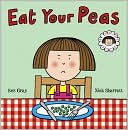
peaspeaspeas1.doc Submitted by participants of Saskatchewan Library Association Conference 2008
Your Custom Text Here
Click below for a storytime plan including the book Eat Your Peas by Kes Gray and highlighting print motivation.

peaspeaspeas1.doc Submitted by participants of Saskatchewan Library Association Conference 2008

Submitted by Saskatchewan Library Association conference participants

 Early Literacy Aside--Explain: Talking with your children while reading, encouraging them to make comments and ask questions is one way to share a book that develops your child's understanding of the book. Make reading with your child a postive experience by allowing your child to make comments and ask questions. Try to focus all your attention on your child for that time.During the storytime, demonstrate these techniques with one or more of your books. Point out what you are doing.
Early Literacy Aside--Empower: Talking with your children and giving them time to respond is supervaluable, even in a conversation consisting entirely of baby babble. This helps your children develop conversation skills. Remember that it can take young children from 5 to 12 seconds to process a question and formulate a response, so it's really important to gie them that extra time to express themselves.
Early Literacy Aside--Explain: Talking with your children while reading, encouraging them to make comments and ask questions is one way to share a book that develops your child's understanding of the book. Make reading with your child a postive experience by allowing your child to make comments and ask questions. Try to focus all your attention on your child for that time.During the storytime, demonstrate these techniques with one or more of your books. Point out what you are doing.
Early Literacy Aside--Empower: Talking with your children and giving them time to respond is supervaluable, even in a conversation consisting entirely of baby babble. This helps your children develop conversation skills. Remember that it can take young children from 5 to 12 seconds to process a question and formulate a response, so it's really important to gie them that extra time to express themselves.
Submitted by Cindy Christin, Bozeman (MT) Public Library and Tracey J., Sacramento (CA) Public Library
 Early Literacy Aside--Empower: Rhymes help teach "phonological awareness," an awareness of the sounds that make up words. You may have noticed that your child enjoys the way a nursery rhyme sounds even if it doesn't make much sense to him. When you introduce a new rhyme or song, repeat it at least twice. Three times is even better. And be sure to keep repeating the old, familiar rhymes too.
Submitted by Cindy Christin, Bozeman (MT) Public Library
Early Literacy Aside--Empower: Rhymes help teach "phonological awareness," an awareness of the sounds that make up words. You may have noticed that your child enjoys the way a nursery rhyme sounds even if it doesn't make much sense to him. When you introduce a new rhyme or song, repeat it at least twice. Three times is even better. And be sure to keep repeating the old, familiar rhymes too.
Submitted by Cindy Christin, Bozeman (MT) Public Library
 Demonstrate aspects of dialogic reading* by asking open-ended questions during your sharing of a book.Book Introduction: With this next book we are going to focus on what we call "dialogic" or "interactive reading."
Read a book. Come back to a picture and ask a question that cannot be answered with yes or now.
Early Literacy Aside--Example: This technique of sharing a book helps develop their narrative skills, their ability to describe things and experiences.
Early Litearcy Aside--Empower: Try dialogic or interactive reading at home with your child. Simply ask questions about what you've read. You can say, Guess what will happen next or relate the story to your child's real experience. Try to ask questions that cannot be answered with yes or no, or just by pointing to the pictures. Having the children talk about the book helps the develop narrative skills. Also, when the child gives a one-word response, you might expand on what she said, adding description or more information.
Demonstrate aspects of dialogic reading* by asking open-ended questions during your sharing of a book.Book Introduction: With this next book we are going to focus on what we call "dialogic" or "interactive reading."
Read a book. Come back to a picture and ask a question that cannot be answered with yes or now.
Early Literacy Aside--Example: This technique of sharing a book helps develop their narrative skills, their ability to describe things and experiences.
Early Litearcy Aside--Empower: Try dialogic or interactive reading at home with your child. Simply ask questions about what you've read. You can say, Guess what will happen next or relate the story to your child's real experience. Try to ask questions that cannot be answered with yes or no, or just by pointing to the pictures. Having the children talk about the book helps the develop narrative skills. Also, when the child gives a one-word response, you might expand on what she said, adding description or more information.
Submitted by Cindy Christin, Bozeman (MT) Public Library * This webpage of the Talker Script from the first edition of Every Child Ready to Read @ your library initiative of the American Library Association gives more background on dialogic reading: http://www.earlylit.net/readytoread/indexE.shtml#scripts Scroll down under Scripts and click on Talkers. You can also use the Dialogic Reading Handout shown on this webpage.
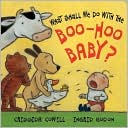
Submitted by Cindy Thompson, Roanoke City (VA) Public Library
 Read book Pig's Picnic by Keiko Kasza. Retell the story using props. Have the children retell the story as you maneuver the props.Early Literacy Aside--Example: Using props is one way to help your child remember the story as they try to retell it. When they can retell a story, it helps their understanding.
Read book Pig's Picnic by Keiko Kasza. Retell the story using props. Have the children retell the story as you maneuver the props.Early Literacy Aside--Example: Using props is one way to help your child remember the story as they try to retell it. When they can retell a story, it helps their understanding.
At the end of storytime hold up the handout of Pig's Picnic (below) and demonstrate how you have cut out the pieces so that the children can retell the story. Early Literacy Aside--Empower: You can strength your children's narrative skills, the ability to tell stories, by taking home this storytime handout, having your children cut out the pictures and retell the story. As they retell the story they may add ideas of their own! pigs-picnic-hand-out.doc Submitted by Laura Mikowski, Hillsboro (OR) Public Libraries
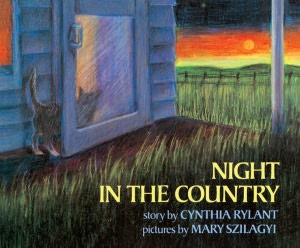
Submitted by Sharon Lindsay, Rockbridge Branch, Bath County (VA) Public Library
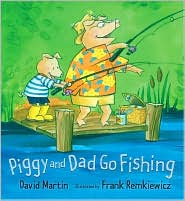
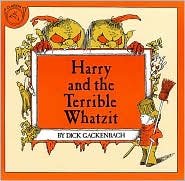
Aside: Now I am going to read to you this wonderful book Pete's a Pizza by William Steig. I especially like this story because it introduces narrative skills, which is the ability to retell a story.Read the story. Aside: You can use things from all around the house to tell a story, just as they used things from around the house in this story. Having your child retell stories helps to develop your child's own narrative skills for later life while at the same time increaseing his memory and imagination and love for books. Submitted by Miss Yolanda, Washington County (VA) Public Library

Submitted by David Banker, Radford (VA) Public Library
Early Literacy Aside--Explain: Researchers have found that one of the early literacy skills is phonological awareness. This is the ability to hear and play with the smaller sounds in words, like rhyming, playing with syllables or parts of words, and hearing beginning sounds of words. The beginning of this skills starts with children hearing and saying the sounds of animals.Sometime durng storytime sing "Old MacDonald" with the children, including several animals--cow, pig, sheep, chicken, duck, etc. Early Literacy Aside--Example: Making the sounds of animals contributes to phonological awareness and hearing sounds in words. Early Literacy Aside--Empower: Take advantage of opportunities to sing and say the sounds of animals with your children. It's fun and it also helps them hear the smaller sounds in words.
Submitted by Kimberly Burnette-Dean, Roanoke County (VA) Public Library
 Read the book Snap! by Marcia Vaughan.Early Literacy Aside--Example: This book lends itself to retelling events which helps your child understand the story. Encourage your child with questons that leave room for them to describe what they hear or see. I used questions like, "What did Joey do when his Mom fell asleep?" and "Who did he meet?"
Early Literacy Aside--Empower: The ability to retell a story is an important skill for children to have in order to understand what they are reading. Predicting what happens next and acting it out, or as it's usually called, pretend playing, is a fun way to retell a story and to gain background knowldge along the way.
Read the book Snap! by Marcia Vaughan.Early Literacy Aside--Example: This book lends itself to retelling events which helps your child understand the story. Encourage your child with questons that leave room for them to describe what they hear or see. I used questions like, "What did Joey do when his Mom fell asleep?" and "Who did he meet?"
Early Literacy Aside--Empower: The ability to retell a story is an important skill for children to have in order to understand what they are reading. Predicting what happens next and acting it out, or as it's usually called, pretend playing, is a fun way to retell a story and to gain background knowldge along the way.
Submitted by Donna Hackman, Bedford (VA) Public Library and Justin Azevedo, Sacramento (CA) Public Library
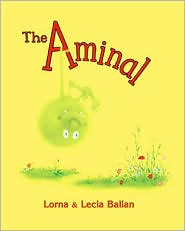
Submitted by Carolyn B. Morehead, Big Island Library, Bedford (VA) Public Library
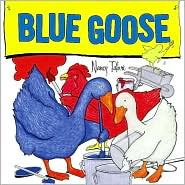
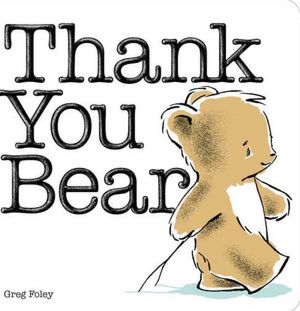
Talk about how what is special to one person might not be special to another. People see things and use things differently.Read the book Thank You Bear by Greg Foley. Activity: Pull out a cardboard box and have the children act out the story. You are the bear. There can be as many monkeys, owls, elephants, etc. as there are children who want to be that animal. Then talk together about the many things you can do with a box. Early LiteracyAside--Example: Acting out stories and having children say parts helps develop their narrative skills, the expressive part of language. Retelling stories is one way that children will later more easily understand what they read. If your child did not get a chance to talk about how they might use a box, listen to their ideas on the way home.
Early Literacy Aside--Empower: Here is a handout for making stick puppets. Using props or puppets is one fun way to encourage children to retell stories at home. It is activities like this that you do with your children that set them on a strong road to reading, in this case helping them understand what they read and how stories work! Puppets: Patterns for making stick puppets. The pattern for the mouse is here, but I use a mouse puppet. The pattern for a bear is also here, but I make myself the bear when I am retelling it with these stick puppets. Thank You Bear stick puppets
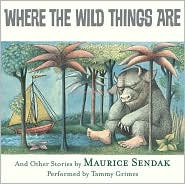

Submitted by Phyllis Arbogast, Blackwater (VA) Regional Library, Carrollton Branch